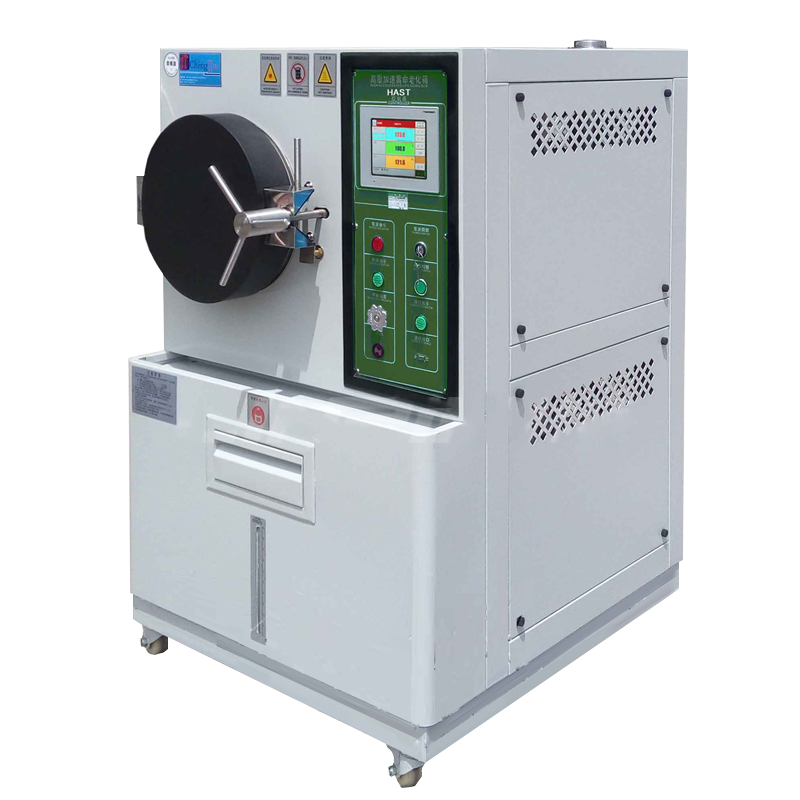HAST chambers are indispensable instruments in the evaluation of product reliability, particularly within the fields of semiconductors, electronic components, and advanced material sciences. The structural integrity, safety, and accuracy of these chambers depend significantly on proper electrical grounding. When grounding is insufficient or improperly executed, a variety of latent hazards and operational failures may arise, undermining both safety and test validity.
Electrical Safety Hazards
Improper grounding within a HAST chamber directly compromises operator safety. A primary function of grounding is the dissipation of fault currents. Without this pathway, electrical faults may energize the metallic frame of the chamber, exposing personnel to electric shock. This risk escalates in environments where humidity and condensation are deliberately elevated, as water molecules increase conductivity across surfaces. In such settings, even minor grounding defects may transform into severe hazards.
Additionally, ungrounded or poorly grounded systems amplify the risk of arc faults. A short circuit or insulation breakdown may cause high-voltage arcing within the chamber’s circuitry, potentially leading to fire, destruction of sensitive components, or catastrophic equipment failure. The hazard is magnified by the presence of pressurized steam and high humidity, both of which elevate the likelihood of dielectric breakdown.

Instrumentation Accuracy Degradation
Beyond safety concerns, improper grounding disrupts the precision of test data. HAST chambers rely on delicate measurement systems to maintain and monitor parameters such as temperature, humidity, and pressure. These sensors and controllers operate within defined electrical tolerances, which are easily destabilized by noise currents introduced through insufficient grounding.
Stray voltages may couple into sensor circuits, causing inaccurate readings. Temperature probes, for example, may register deviations of several degrees due to induced electrical interference, while humidity transducers may display erratic fluctuations. Such anomalies jeopardize the validity of accelerated life testing, leading to conclusions that misrepresent product durability. For manufacturers, these inaccuracies risk costly misjudgments: defective components may pass evaluation, while reliable products may be unjustly rejected.
Electromagnetic Interference Amplification
Improper grounding transforms HAST chambers into potential sources and victims of electromagnetic interference (EMI). The chamber’s internal power circuits generate switching noise, which is normally redirected to earth through proper grounding. Without effective grounding, these emissions propagate into surrounding laboratory equipment, disturbing adjacent instruments such as oscilloscopes, signal analyzers, and temperature monitoring systems.
Conversely, ungrounded chambers are more susceptible to incoming EMI. External electromagnetic disturbances may couple into the chamber’s control systems, altering setpoints or disrupting safety interlocks. In environments such as semiconductor reliability labs, where multiple pieces of high-frequency equipment operate concurrently, this vulnerability can destabilize entire testing ecosystems.

Accelerated Corrosion and Structural Damage
HAST chambers operate under highly aggressive conditions, combining elevated temperature, humidity, and pressure to accelerate product aging. Under such stress, improper grounding contributes to electrochemical corrosion within the chamber’s metallic infrastructure. Stray currents, unable to discharge effectively, traverse through metallic joints and welds, accelerating rust formation and degrading structural integrity.
Critical components such as pressure vessels, door seals, and heating elements become particularly vulnerable. Over time, this electrochemical degradation may compromise chamber airtightness, leading to leakage of pressurized steam. Once leakage occurs, not only is test accuracy compromised, but the safety of laboratory personnel is placed at severe risk.
Increased Probability of System Malfunction
Chamber controllers, programmable logic units, and safety interlocks all depend on stable reference voltages. Grounding deficiencies distort these references, resulting in unpredictable system behaviors. Symptoms may include uncommanded shutdowns, sudden temperature spikes, or irregular humidity cycles. Such malfunctions disrupt test continuity, wasting valuable testing cycles and extending development timelines.
Furthermore, system instability increases the likelihood of false alarms. Alarms triggered by phantom signals complicate laboratory workflows, requiring frequent intervention and reducing testing throughput. The reputational damage to laboratory operators or manufacturers may be substantial, especially when clients depend on high-volume, high-accuracy reliability assessments.
Legal and Compliance Risks
International testing standards such as JEDEC JESD22-A110 (Highly Accelerated Temperature and Humidity Stress Test) mandate strict operational integrity. Improper grounding compromises compliance with these standards, invalidating test results. For manufacturers seeking certification or qualification of semiconductor devices, non-compliance results in delays, re-testing costs, and possible market withdrawal of critical products.
In addition, regulatory bodies governing workplace safety, including OSHA (Occupational Safety and Health Administration) and IEC (International Electrotechnical Commission), establish grounding requirements for high-voltage test equipment. Failure to adhere exposes organizations to liability claims, insurance penalties, and legal consequences should accidents occur.

Financial and Reputational Impact
Improper grounding translates directly into financial losses. First, unplanned downtime caused by equipment failure disrupts production schedules, delaying product release. Second, invalid test data necessitates costly repeat testing, consuming both time and resources. Third, defective products that pass through compromised testing may reach the market, resulting in warranty claims, recalls, or brand damage.
Reputational impact may exceed financial damage. Clients relying on test laboratories for accurate data demand uncompromised reliability. Any perception of technical negligence, such as grounding oversight, diminishes client trust and threatens long-term business relationships. Within competitive markets, maintaining confidence is essential, making proper grounding not only a technical requirement but also a strategic necessity.
Preventive Engineering and Best Practices
Ensuring proper grounding in HAST chambers requires systematic engineering practices:
-
Dedicated Grounding Conductor – A low-impedance conductor should directly connect the chamber chassis to the facility grounding grid.
-
Ground Resistance Verification – Resistance values below 1 ohm are recommended for test equipment, verified through periodic measurement.
-
Corrosion-Resistant Connectors – Grounding points must utilize stainless steel or copper terminals to resist electrochemical degradation under humid conditions.
-
Redundant Grounding Paths – For chambers operating under extreme stress, secondary grounding conductors reduce the risk of disconnection or single-point failure.
-
Routine Inspection and Maintenance – Scheduled inspection ensures grounding integrity remains intact despite prolonged exposure to moisture and vibration.
-
Compliance with Standards – All grounding systems must align with IEC 61010, NFPA 70, and JEDEC guidelines for high-voltage laboratory equipment.
Value Proposition of Advanced HAST Chambers with Optimized Grounding
Manufacturers delivering advanced HAST chambers emphasize optimized grounding architectures as part of their engineering value. High-grade systems incorporate factory-verified grounding designs, redundant safety interlocks, and integrated diagnostic modules to monitor grounding continuity in real time. These innovations provide laboratories with enhanced safety, reliability, and compliance assurance.
By investing in chambers with superior grounding systems, organizations safeguard both their personnel and their data integrity. The reduction of downtime, prevention of test invalidation, and assurance of long-term structural durability collectively deliver significant return on investment. In competitive markets such as semiconductors, automotive electronics, and aerospace components, this reliability translates into accelerated product qualification cycles and strengthened client confidence.
Improper grounding of HAST chambers introduces layered risks spanning safety, test validity, compliance, and financial stability. The challenges extend from immediate hazards such as electric shock and arc faults, to long-term consequences including corrosion, system malfunctions, and reputational damage. Conversely, robust grounding practices and advanced chamber designs mitigate these risks, ensuring operational safety and reinforcing the credibility of reliability testing. For industries dependent on accelerated life evaluation, grounding integrity is not merely a technical detail but a critical foundation of sustainable success.












